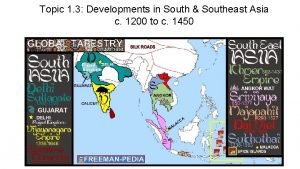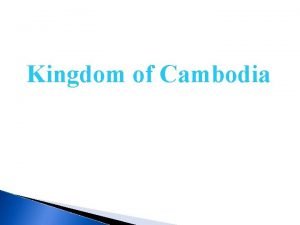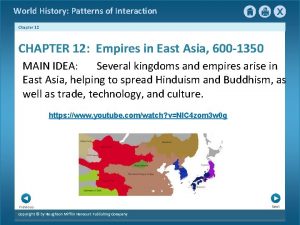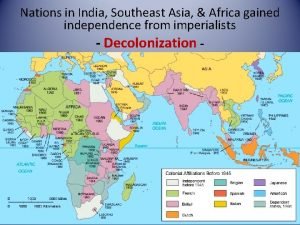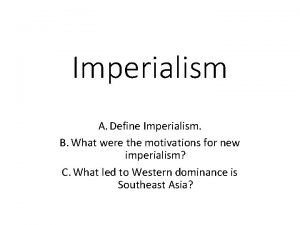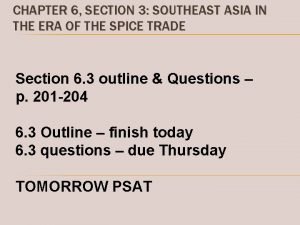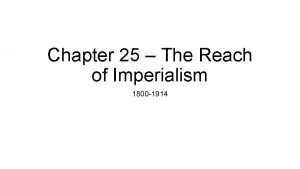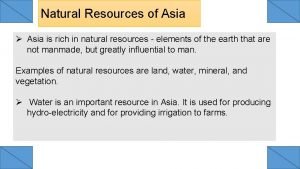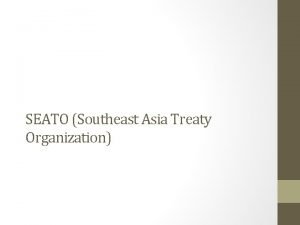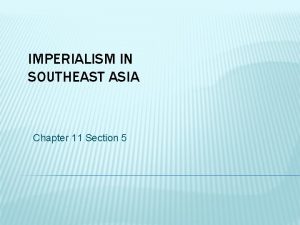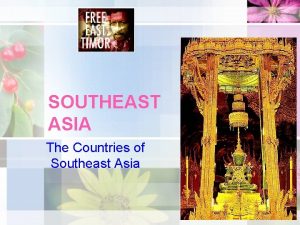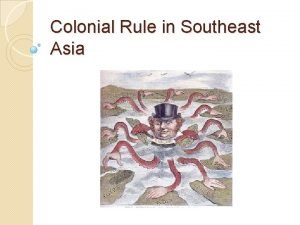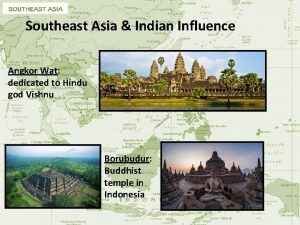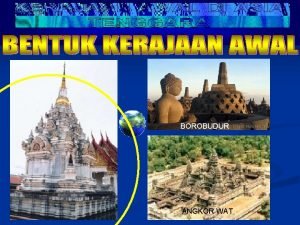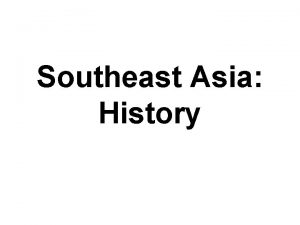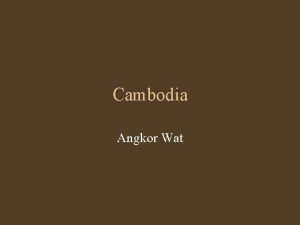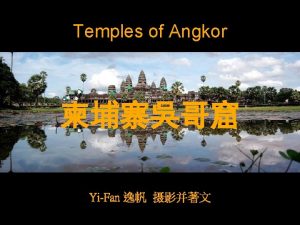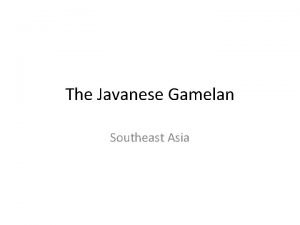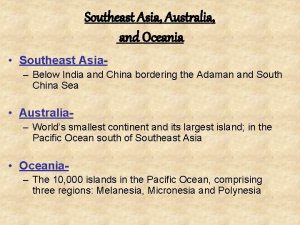Southeast Asia Indian Influence Angkor Wat dedicated to















- Slides: 15

Southeast Asia & Indian Influence Angkor Wat: dedicated to Hindu god Vishnu Borubudur: Buddhist temple in Indonesia

Southeast Asia & Muslim Influence

Geography and Resources • Southeast Asia has three geographical zones: (1) the Indo-china mainland; (2) the Malay peninsula; and (3) the islands. • The area stands between China and India, and has been influenced by both civilizations.

• Earliest migrants were Austronesians (aka the Malay) • Southeast Asia received waves of migration of Malay peoples from southern China. • Malay migrations subsequently continued into the Pacific islands and into the Indian Ocean. Early Malay groups in Southeast Asia lived in small villages, manufactured bronze tools, and were organized in small political units. • Later, series of kingdoms rise and fall…

And now for a history of SE Asia using maps… http: //www. timemaps. com/history/south-east -asia-750 ad

The Srivijayan Kingdom • Srivijaya was located on Sumatra and dominated the new southern trade route through the Strait of Malacca as well as other shipping routes through the area of modern Malaysia and Indonesia.

• The Srivijayan kings maintained their control over this complex system through: – – military power, diplomacy control of trade techniques of the “theater-state. ” • Kings used the splendor of their capital to attract resources and labor. • The temporal power of the kings was enhanced by popular belief in their magical powers. • Kings were associated with forces of fertility. • They also patronized Buddhist monasteries and schools.

• Indian culture exercised a powerful influence on Srivijayan concepts of kingship and government, while the Hindu and Buddhist religions became the dominant faiths of the region. • Srivijayans did not, however, simply imitate India; they borrowed selectively from Indian civilization and adapted what they borrowed to their own culture and needs.

• Changes in trade routes led to the decline of Srivijaya in the eleventh century. The capital was destroyed in 1025 by the Chola kingdom.

Oceania

Oceania: Micronesia: “Micro” because the islands are small Melanesia: “Mela” because these people typically have darker skin (melanin) Polynesia: “Poly” because there are so many islands

Early Societies in Australia • Like hunting and gathering societies elsewhere, the Aboriginals lived in small, mobile communities. • This practice of communal land life would stay virtually intact until the arrival of the British in 1788.

Austronesian Peoples • Like the Aboriginals of Australia, the peoples of New Guinea were primarily hunter gatherers. • However, this would change with the introduction of peoples from SE Asia. • Most of the peoples depended upon root crops and the herding of animals. • Diffusion of culture from the peoples of SE Asia would as they would migrate from islands in the region.

The Peopling of the Pacific Islands • Many ventured onto various islands during a time of low seas. • Possessed a sophisticated maritime technology as well as agricultural expertise. • Around 1500 BCE, Austronesian mariners had arrived to Vanuatu and New Caledonia and continued to migrate eastward in Oceania. • Polynesian, Micronesian, and Melanesian societies develop differently over time.

Polynesian Migrations
 Sejarah tingkatan 4 bab 3
Sejarah tingkatan 4 bab 3 Buddhist temples
Buddhist temples Angkor wat outline
Angkor wat outline Chapter 12 section 5 kingdoms of southeast asia and korea
Chapter 12 section 5 kingdoms of southeast asia and korea Is india southeast asia
Is india southeast asia Define imperialism
Define imperialism In 1500 mainland southeast asia was a relatively
In 1500 mainland southeast asia was a relatively The reach of imperialism
The reach of imperialism Countries in southeast asia
Countries in southeast asia Hoyt sector model
Hoyt sector model Natural resources of asia
Natural resources of asia Countries in southeast asia
Countries in southeast asia Chapter 11 section 5 imperialism in southeast asia
Chapter 11 section 5 imperialism in southeast asia Insular southeast asia
Insular southeast asia Colonial rule in southeast asia
Colonial rule in southeast asia Chapter 15 lesson 1 physical geography of north africa
Chapter 15 lesson 1 physical geography of north africa

